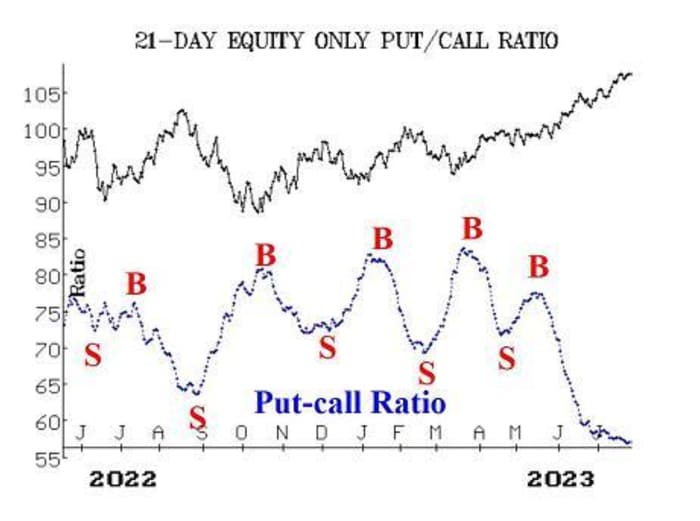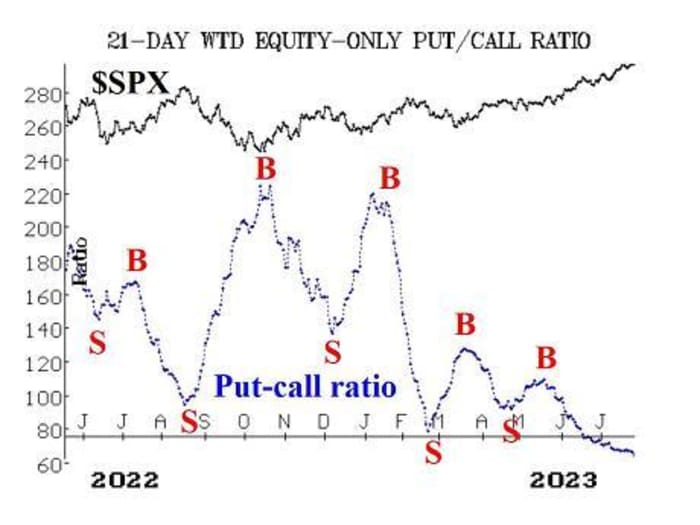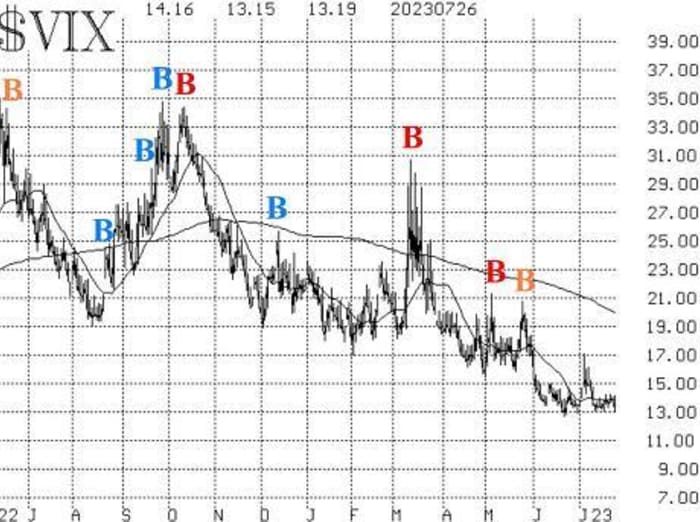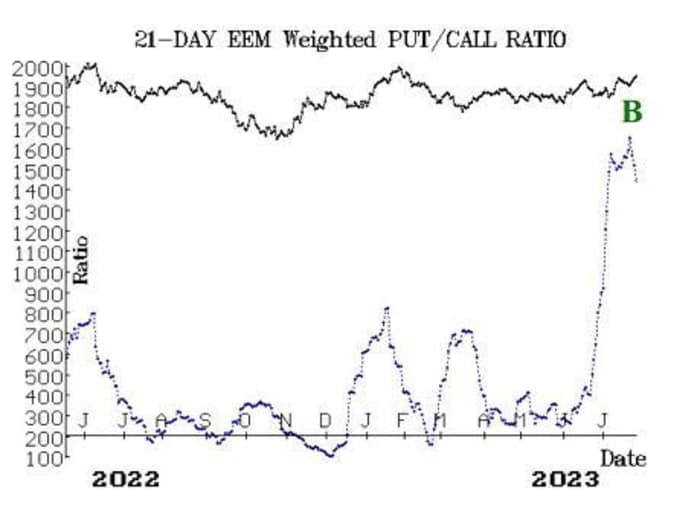Hersh Shefrin, a mild-mannered behavioral economist at Santa Clara University, still wears a mask when he goes out in public. In fact, he wears two masks: an N95 medical-grade mask, and another surgical mask on top. “I’m in a vulnerable group. I still believe in masking,” Shefrin, 75, told MarketWatch. It’s worked so far: He never did get COVID-19. Given his age, he is in a high-risk category for complications, so he believes in taking such precautions.
But not everyone is happy to see a man in a mask in September 2023. “A lot of people just want to be over this,” Shefrin, who lives in Menlo Park, Calif., said. “Wearing a mask in public generates anger in some people. I’ve had people come up to me and set me straight on why people should not wear masks. I’ve had people yell at me in cars. It might not match with where they are politically, or they genuinely feel that the risks are really low.”
His experience speaks to America in 2023. Our attitude to COVID-related risk has shifted dramatically, and seeing a person wearing a mask may give us anxiety. But how will we look back on this moment — 3½ years since the start of the coronavirus pandemic? Will we think, “There was a mild wave of COVID, but we got on with it”? Or say, “We were so traumatized back then, dealing with the loss of over 1.1 million American lives, and struggling to cope with a return to normal life”?
We live in a postpandemic era of uncertainty and contradiction. Acute respiratory syndrome coronavirus 2, or SARS-CoV-2, is back, yet it never really went away. Roughly a quarter of the population has never tested positive for COVID, but some people have had it twice or three times. Few people are wearing masks nowadays, and the World Health Organization recently published its last weekly COVID update. It will now put out a new report every four weeks.
“‘I’ve had people come up to me and set me straight on why people should not wear masks.’”
People appear sanguine about the latest booster, despite the Centers for Disease Control and Prevention recommending that people get the updated shot. Fewer than a quarter of Americans (23%) said they were “definitely” planning to get this shot, according to a report released this week by KFF, the nonprofit formerly known as the Kaiser Family Foundation. Some 23% said they will “probably get it,” 19% said they will “probably not get it” and 33% will “definitely not get it.”
Do we throw caution to the wind and treat fall and winter as flu, RSV and COVID season? It’s hard both to avoid COVID, many people contend, and to lead a normal life. The latest wave so far is mild, notwithstanding recent reports of extreme fatigue. Scientists have voiced concerns about potential long-term cognitive decline in some severe cases, but most vaccinated people recover. Still, scientists say it’s too early to know about any long-term effects of COVID.
Amid all these unknowns are many risk-related theories: The psychologist Paul Slovic said we evaluate risk based on three main factors. Firstly, we rely on our emotions rather than the facts (something he calls “affect heuristic”). Secondly, we are less tolerant of risks that are perceived as dreadful and unknown (“psychometric paradigm theory”). Thirdly, we become desensitized to catastrophic events and unable to appreciate loss (“psychophysical numbing”).
Shefrin, the behavioral economist, said these three theories influence how we cope with COVID. “Early in the pandemic, the ‘dread factor’ and ‘unknown factor’ meant we all felt it was very risky,” he said. “But we began to see that the people who were most affected were older with comorbidities. The dread factor is way down because of successful vaccinations. We certainly feel that the unknowable factor is down, but with new variants there is potentially something to worry about.”
Hersh Shefrin: “We certainly feel that the unknowable factor is down, but with new variants there is potentially something to worry about.”
c/o Hersh Shefrin
Habituation and status quo lead to inaction
The profile of risk has changed dramatically since the pandemic began. Vaccines protect the majority of people from the most serious effects of COVID — for the 70% of Americans who have gotten the two initial COVID shots. So should we focus on living for today, and stop worrying about tomorrow? Or, given all the unknowns, are we still rolling the dice with our health by boarding crowded subway trains, socializing at parties and stepping into the office elevator?
The number of people dying from COVID has, indeed, fallen dramatically. Weekly COVID deaths in the U.S. peaked at 25,974 during the week of Jan. 9, 2021. There had been 60 COVID-related deaths during the week of March 14, 2020 — when the WHO declared the outbreak a worldwide pandemic — far fewer than the 607 deaths during the week of Sept. 23, the most recent week for which data are available. But in March 2020, with no vaccine, people had reason to be scared.
“COVID deaths are actually worse now than when we were all freaking out about it in the first week of March 2020, but we’re habituated to it, so we tolerate the risk in a different way. It’s not scary to us anymore,” said Annie Duke, a former professional poker player, and author of books about cognitive science and decision making. “We’re just used to it.” Flu, for example, continues to kill thousands of people every year, but we have long become accustomed to that.
A dramatic example of the “habituation effect”: Duke compares COVID and flu to infant mortality throughout the ages. In 1900, the infant-mortality rate was 157.1 deaths per 1,000 births, falling to 20.3 in 1970, and 5.48 deaths per 1,000 births in 2023. “If the 1900 infant-mortality rate was the same infant-mortality rate today, we’d all have our hair on fire,” she said. “We think we would not live through that time, but we would, as people did then, because they got used to it.”
“‘COVID deaths are actually worse now than when we were all freaking out about it in the first week of March 2020.’”
Duke, who plans to get the updated booster shot, believes people are rolling the dice with their health, especially concerning the long-term effects. The virus, for example, has been shown to accelerate Alzheimer’s-related brain changes and symptoms. Could it also lead to some people developing cognitive issues years from now? No one knows. “Do I want to take the risk of getting repeated COVID?” Duke said. “We have this problem when the risks are unknown.”
When faced with making a decision that makes us uncomfortable — usually where the outcome is uncertain — we often choose to do nothing, Duke said. It’s called “status quo bias.” There’s no downside to wearing a mask, as doctors have been doing it for years, but many people now eschew masks in public places. Research suggests vaccines have a very small chance of adverse side effects, but even that highly unlikely outcome is enough to persuade some people to opt out.
And yet Duke said people tend to choose “omission” over “commission” — that is, they opt out of getting the vaccine rather than opting in. But why? She said there are several reasons: The vaccine comes with a perceived risk, however small, that something could go wrong, so if you do nothing you may feel less responsible for any negative outcome. “Omission is allowing the natural state of the world to continue, particularly with a problem that has an unknown downside,” she said.
Here’s a simple example: You’re on the way to the airport in a car with your spouse, and there’s a roadblock. You have two choices: Do you sit and wait, or do you take an alternative route? If you wait and miss your flight, you may feel that the situation was beyond your control. If you take a shortcut, and still miss your flight, you may feel responsible, and stupid. “Now divorce papers are being drawn up, even though you had the same control over both events,” Duke said.
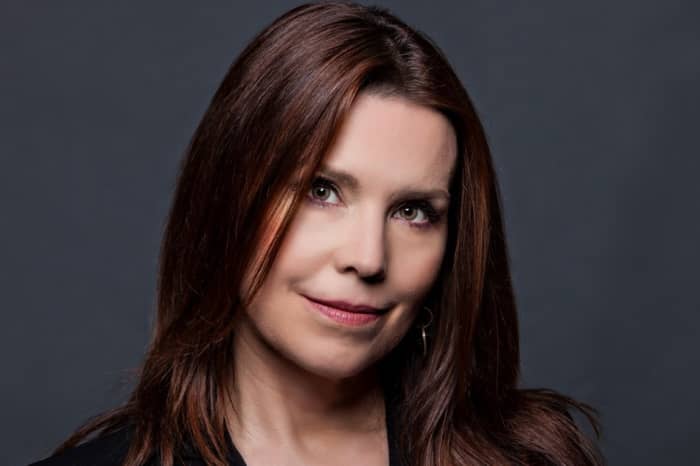
Annie Duke: “COVID deaths are actually worse now than when we were all freaking out about it in the first week of March 2020.”
c/o Annie Duke
Risk aversion is a complicated business
Probably the most influential study of how people approach risk is prospect or “loss-aversion” theory, which was developed by Daniel Kahneman, an economist and psychologist, and the late Amos Tversky, a cognitive and mathematical psychologist. It has been applied to everything from whether to take an invasive or inconvenient medical test to smoking cigarettes in the face of a mountain of evidence that smoking can cause cancer.
In a series of lottery experiments, Kahneman and Tversky found that people are more likely to take risks when the stakes are low, and less likely when the stakes are high. Those risks are based on what individuals believe they have to gain or lose. This does not always lead to a good outcome. Take the stock-market investor with little money who sells now to avoid what seems like a big loss, but then misses out on a life-changing, long-term payday.
As that stock-market illustration shows, weighing our sensitivity to losses and gains is actually very complicated, and they are largely based on people’s individual circumstances, said Kai Ruggeri, an assistant professor of health policy and management at Columbia University. He and others reviewed 700 studies on social and behavioral science related to COVID-19 and the lessons for the next pandemic, determining that not enough attention had been given to “risk perception.”
So how does risk perception apply to vaccines? The ultimate decision is personal, and may be less impacted by the collective good. “If I perceive something as being a very large loss, I will take the behavior that will help me avoid that loss,” Ruggeri said. “If a person believes there’s a high risk of death, illness or giving COVID to someone they love, they will obviously get the vaccine. But there’s a large number of people who see the gain and the loss as too small.”
“‘If a person believes there’s a high risk of death, illness or giving COVID to someone they love, they will obviously get the vaccine.’”
In addition to a person’s own situation, there is another factor when people evaluate risk factors and COVID: their tribe. “Groupthink” happens when people defer to their social and/or political peers when making decisions. In a 2020 paper, social psychologist Donelson R. Forsyth cited “high levels of cohesion and isolation” among such groups, including “group illusions and pressures to conform” and “deterioration of judgment and rationality.”
Duke, the former professional poker player, said it’s harder to evaluate risk when it comes to issues that are deeply rooted in our social network. “When something gets wrapped into our identity, it makes it hard for us to think about the world in a rational way, and abandon a belief that we already have,” she said, “and that’s particularly true if we have a belief that makes us stand out from the crowd in some way rather than belong to the crowd.”
Exhibit A: Vaccine rates are higher among people who identify as Democrat versus Republican, likely based on messaging from leaders in those respective political parties. Some 60% of Republicans and 94% of Democrats have gotten a COVID vaccine, according to an NBC poll released this week. Only 36% of Republicans said it was worth it, compared with 90% of Democrats. “When things get politicized, it creates a big problem when evaluating risk,” Duke added.
Risk or no risk, “COVID isn’t done with us,” Emily Landon, an infectious-diseases specialist at the University of Chicago, told MarketWatch. “Just because people aren’t dying in droves does not mean that COVID is no big deal. That’s an error in judgment. Vaccination and immunity is enough to keep most of us out of the hospital, but it’s not enough to keep us from getting COVID. What if you get COVID again and again? It’s not going to be great for your long-term health.”
Source link
#COVID #isnt #people #started #rolling #dice


